Onam, the vibrant and revered festival originating from the lush landscapes of Kerala, transcends its geographical boundaries to capture the hearts of people worldwide. Celebrated with fervour and enthusiasm, this Godlike festival holds a mirror to the rich cultural tapestry of God’s own country, reflecting a blend of traditions, legends, and festivities that resonate universally. Whether you are a Malayali or not, the spirit of Onam is boundless, weaving stories of devotion, colourful rituals, artistic expressions, and a sumptuous feast that awakens the senses.
In this exploration, we will delve into the history, significance, and cultural manifestations of Onam, delving into its diverse practices that embody unity and joy. From the ancient legend of Mahabali to the kaleidoscope of activities that grace the festival, Onam is more than a regional celebration; it’s a testament to the human spirit’s capacity for communal jubilation. Let’s uncover the essence of Onam, as it continues to bridge cultures and generations with its universal appeal.
Thiruvonam Nakshathram Date and Timings
In 2024, Thiruvonam Nakshathram is scheduled to occur on Sunday, September 15. This auspicious celestial event plays a pivotal role in marking the Onam festivities. The timings for Thiruvonam Nakshathram on this day are as follows, considering the UAE time zone:
Thiruvonam Nakshathram Begins: September 14, 2024 | 11:02 AM (New_York)
Thiruvonam Nakshathram Ends: September 15, 2024 | 9:19 AM (New_York)
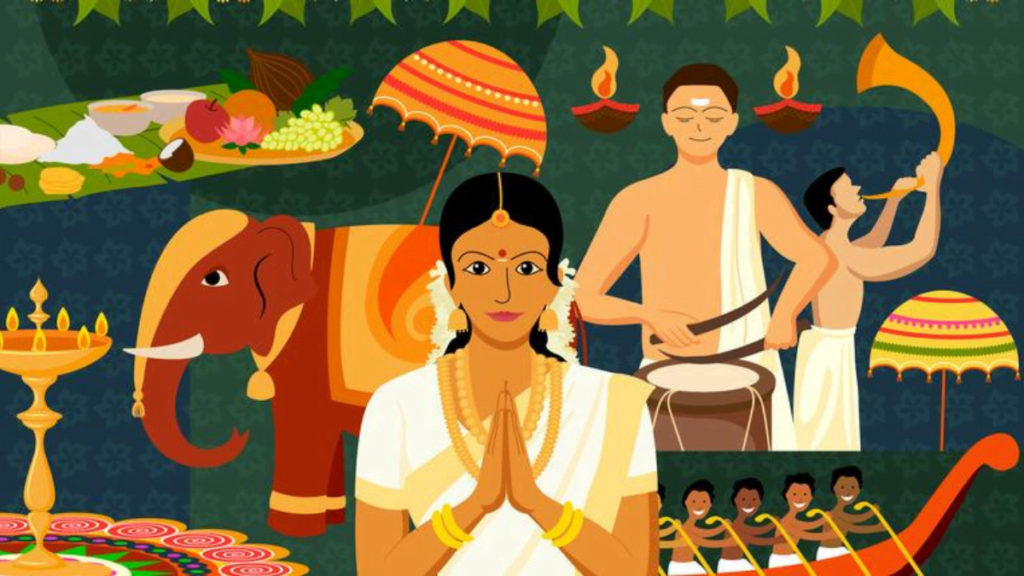
History and Significance of Onam
Onam’s history and significance are intertwined with the tale of Mahabali and his devotion, which led to the annual celebration of this vibrant festival. It represents unity, cultural richness, agricultural abundance, and the spirit of giving, making it a cherished occasion for people across Kerala and beyond.
History:
Onam, the vibrant festival of Kerala, has its origins deeply rooted in Hindu mythology and folklore. The festival’s story is centred around the legendary king Mahabali, who ruled over the lands with unparalleled benevolence. The narrative of Mahabali is found in various Hindu texts and oral traditions, but it is most prominently featured in the Puranas.
According to the myth, Mahabali was a righteous and virtuous king who achieved unprecedented power and authority, even surpassing the gods (Devas). This rise in power worried the Devas, who approached Lord Vishnu for assistance. However, Vishnu, considering Mahabali’s devotion and good rule, chose not to interfere directly.
In a bid to test Mahabali’s devotion and to balance the universe, Lord Vishnu incarnated as Vamana, a dwarf Brahmin. Vamana approached Mahabali during a grand Yajna (sacrificial ritual) conducted by the king. He asked for a simple request: three paces of land to be measured by his tiny feet. Mahabali, known for his generosity, granted the request without hesitation.
However, to Mahabali’s astonishment, Vamana transformed into a colossal figure, covering the earth, sky, and heavens with his first two steps. With no place left for the third step, Mahabali humbly offered his own head as a resting place for Vamana’s foot. Vamana’s final step sent Mahabali to the netherworld, but due to his unwavering devotion and selflessness, he was granted a boon to visit his kingdom once a year, marking the beginning of the Onam festival.
Significance:
Onam holds deep significance in the hearts of the people of Kerala, extending beyond religious boundaries to become a cultural celebration of unity and prosperity. The festival embodies several key themes:
- Harmony and Unity: Onam transcends religious divisions and unites people in celebration. Regardless of caste, creed, or background, everyone in Kerala participates in the festivities, promoting unity and a sense of belonging.
- Cultural Identity: Onam showcases the rich cultural heritage of Kerala through its various art forms, rituals, and practices. It is a time when traditional dance, music, and culinary arts take center stage, reinforcing the unique identity of the region.
- Agricultural Abundance: Onam falls during the harvest season, symbolizing the bountiful agricultural output of the land. The floral decorations and feasts highlight the prosperity and fertility of Kerala’s fields.
- Generosity and Giving: Mahabali’s character epitomizes selflessness and generosity. Onam encourages people to be charitable and give to those in need, fostering a spirit of goodwill and community.
- Remembrance of the Past: Onam serves as a remembrance of Kerala’s glorious past and the reign of King Mahabali. It’s a time to reflect on the virtues of benevolent leadership and the importance of humility.
Cultural Celebrations and Practices
The heart of Onam lies in its diverse cultural celebrations and practices, which bring vibrancy and excitement to the festival. These activities showcase the rich heritage of Kerala and contribute to the festive atmosphere that engulfs the state during this time.
1. Attachamayam:
The festivities kick off with the Attachamayam procession, a grand parade that starts from Thripunithara in Kochi. This procession is a visual spectacle featuring a combination of traditional elements, such as elephant marches, drum beats, and colourful floats depicting scenes from the Mahabharata and Ramayana. The parade’s route traditionally leads to a temple dedicated to Vamana, the avatar of Vishnu, reinforcing the festival’s roots in mythology.
2. Pookalam:
One of the most visually captivating aspects of Onam is the creation of Pookalam, intricate floral carpets made from a wide variety of flowers. Women meticulously arrange these flowers into elaborate patterns on the floors of homes and temple premises. This tradition requires patience, creativity, and a keen sense of aesthetics. Lamps often accompany these floral patterns, enhancing their beauty during the evenings. Pookalam competitions are also held across Kerala, showcasing the skills and artistic talent of the participants.
3. Traditional Dances:
Onam comes alive with a variety of traditional dance forms that encapsulate the essence of Kerala’s culture and history. The renowned Kathakali, with its elaborate makeup and dramatic expressions, takes centre stage. Other dances like Thiruvathira, Pulikali, Kummattikali, and Onam Kali add to the festival’s cultural tapestry.
- Thiruvathira: This graceful dance, performed by women, involves rhythmic movements around a lamp (Nilavilaku). It’s accompanied by Thiruvathira Paattu, folk songs dedicated to Lord Shiva and Parvati.
- Pulikali: Also known as Kaduvakali, this folk dance involves performers painting themselves as tigers in vibrant shades. The dance is accompanied by the beats of traditional instruments like Chenda, Thakil, and Udukku.
- Onam Kali: This dance involves performers encircling a lamp and dancing to songs that narrate tales from the Ramayana, further connecting the festival to Hindu mythology.
4. Vallamkali – The Boat Race:
The Vallamkali, or snake boat race, is an iconic event during Onam. Various types of boats, including paddled longboats and snake boats, compete in a thrilling race on the Pampa River. The energetic rowing is accompanied by the melodious Vachipaatu, boat songs that entertain spectators and encourage the rowers.
5. Onasadya – The Traditional Feast:
Onam is incomplete without the sumptuous Onasadya, a grand vegetarian feast served on banana leaves. With around 29 dishes that showcase the diversity of Kerala’s culinary heritage, this meal is a testament to the festival’s spirit of abundance and unity. The feast includes dishes like rice, sambar, avial, pappadam, pickle, and various curries. It concludes with the delectable sweet Payasam, offering a harmonious blend of flavours.
As a whole, these cultural celebrations and practices contribute to the vibrant and joyous atmosphere of Onam, inviting people to partake in the rich tapestry of Kerala’s traditions and values.

Onam Celebrations Beyond Kerala
The vibrant and culturally rich festival of Onam extends its influence far beyond the borders of Kerala. While rooted in the traditions of “God’s Own Country,” Onam has managed to transcend geographical boundaries, resonating with people from various cultures and backgrounds. The festival’s universality and appeal have led to its vibrant celebration among the Malayali diaspora and even non-Malayali communities around the world. The festivities of Onam bring people together in a spirit of unity, joy, and cultural exchange.
1. Malayali Diaspora Celebrations:
- UAE: The United Arab Emirates is home to a significant Malayali population. Here, Onam is celebrated with grandeur, featuring traditional events like pookalam competitions, cultural performances, and feasts. Various social and cultural organizations organize events to ensure that the expatriate community can relive the essence of Onam even on foreign soil.
- USA: The Malayali community in the United States also takes great pride in celebrating Onam. Festivals are organized with a mix of traditional and modern elements, including cultural performances, music, dance, and delicious feasts. These celebrations help maintain a connection to their roots and heritage.
- Singapore: The Malayali diaspora in Singapore comes together to celebrate Onam with colorful cultural events, traditional performances, and feasting. These celebrations foster a sense of community and belonging among expatriates, creating a home away from home.
2. Non-Malayali Participation:
- Cultural Exchange: Onam’s appeal isn’t limited to the Malayali community alone. Non-Malayali individuals, both within India and internationally, actively participate in Onam celebrations. This cultural exchange allows people to experience the diverse traditions, art forms, and cuisines of Kerala.
- Unity and Diversity: Onam’s universal spirit reflects the broader Indian ethos of unity in diversity. The festival’s emphasis on togetherness and inclusivity resonates with people from all walks of life, reinforcing the importance of cultural harmony.
3. Public Celebrations:
- Tourist Attraction: Onam’s unique cultural events, such as Vallamkali (snake boat race) and traditional dances, have become major attractions for tourists visiting Kerala during the festival season. This influx of visitors from around the world not only enriches the celebrations but also contributes to the local economy.
- Educational Opportunities: Onam provides an opportunity for people from different cultures to learn about Kerala’s rich heritage, mythology, and customs. Workshops, exhibitions, and interactive events help educate and engage participants in the festivities.
The allure of Onam extends well beyond the borders of Kerala. Its celebration among the Malayali diaspora and its welcoming embrace by individuals from diverse backgrounds exemplify the festival’s universal essence. Onam is not just a state-specific festival; it’s a celebration of unity, cultural diversity, and the enduring power of tradition.
Conclusion
In essence, Onam’s vibrant tapestry of culture, rooted in Kerala’s lush landscapes, binds people globally. Bridging traditions and modernity, it resonates universally. Through legends, intricate rituals, dances, and feasts, Onam’s spirit connects hearts beyond regional confines. Embracing Malayalis and non-Malayalis alike, symbolizes unity and cultural exchange. The festival’s universal appeal paints a picture of shared joy and belonging.



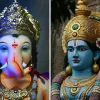









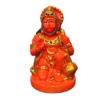
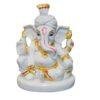

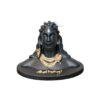


Add comment